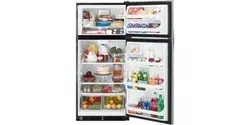
TABLE OF CONTENTS
www.frigidaire.com USA 1-800-944-9044 www.frigidaire.ca Canada 1-800-265-8352
All about the
Use & Care
of your Refrigerator
Important Safety Instructions ......................2
Installation ................................................4
Door Removal Instructions ..........................5
Handle Installation .....................................6
Connecting Water Supply ............................8
Ice Service ...............................................10
807876503 (January 2014)
Controls ...................................................10
Normal Operating Sounds and Sights ......... 12
Care and Cleaning ....................................13
Before you Call .........................................14
Major Appliance Warranty .........................15
Loading ...
Loading ...
Loading ...
